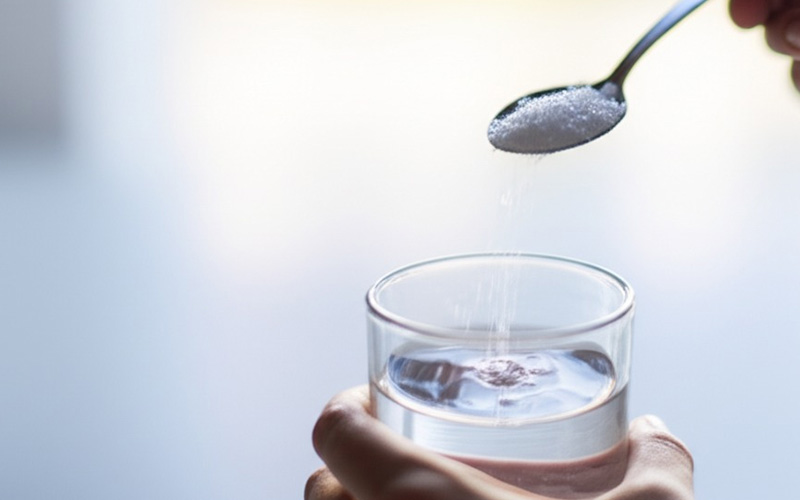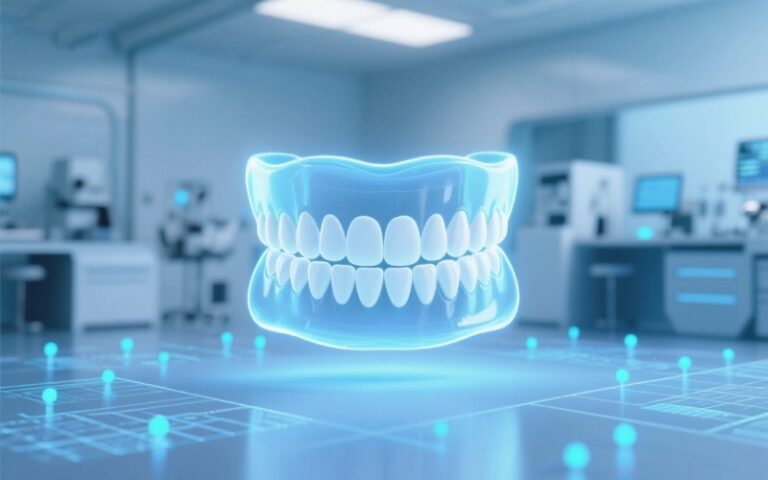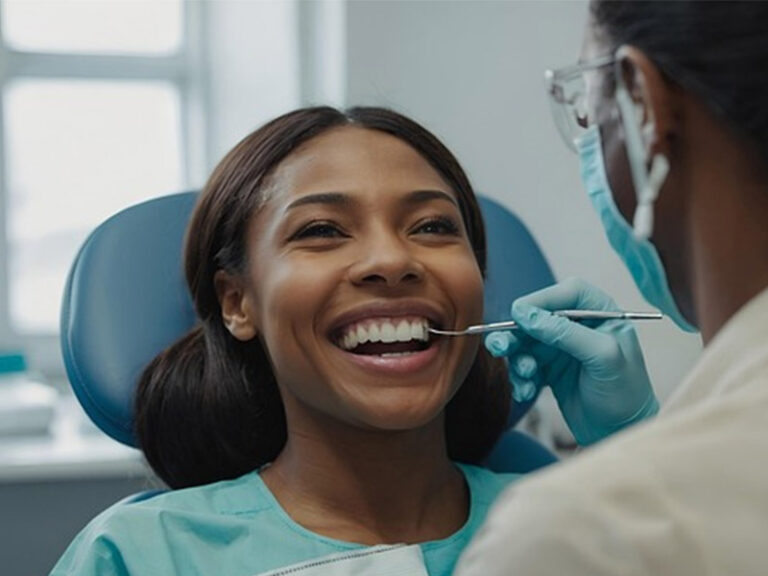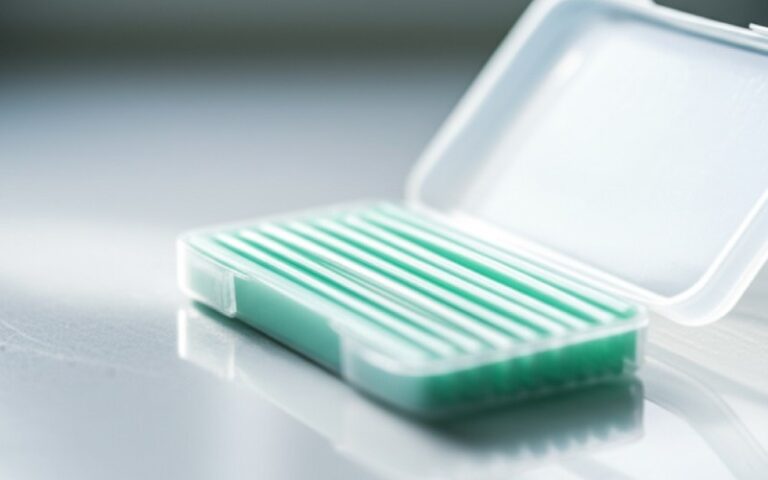
How I Learned to Treat Gum Disease At Home Without a Dentist
I remember the first time I saw pink on my toothbrush. I ignored it. Then, my gums started to look a little red and puffy. I still told myself it was nothing. But the problem didn’t go away. It got worse. Are you noticing bleeding gums, bad breath, or sensitive teeth? This could be the start of gum disease. You might be worried about what this means for your health and your wallet. You might be scared of painful dental procedures and big bills.
This article is for you. I’m going to share what I learned about how to fight gum disease at home. I will show you how you can take control of your oral health and start healing your gums today. We’ll explore simple, powerful steps you can take at home. These are the methods I used to improve my own gum health and avoid expensive treatments. This is your guide to understanding and fighting mild gum disease without visiting a dentist.
Inhaltsübersicht
What Is Gum Disease and Why Should I Care?
When I first heard the term gum disease, I thought it was something that only happened to other people. I was wrong. Gum disease is very common. It starts as something called gingivitis. This is the early stage of gum disease. It happens when plaque, a sticky film of bacteria, builds up on your teeth. This buildup causes inflammation. Your gums might look red, feel sore, or bleed when you brush. This is a warning sign your body is sending you.
The big problem is what happens if it’s left untreated. Gingivitis can turn into a more serious problem called periodontal disease. This is a severe form of gum disease where the inflammation goes deeper. It can damage the soft gum tissue and the bone that supports your teeth. It can create pockets between your teeth and gums where more bacteria can hide. This is a scary thought, because this serious disease can lead to tooth loss. Understanding this progression made me realize I had to act fast to stop my gum issues.
Can I Really Treat Gum Disease Without a Dentist?
This is a big question. The answer is yes and no. For serious periodontal disease, you absolutely need to see a dentist. But for gingivitis, the early stage, there is so much you can do at home. I discovered that by using a careful, methodical approach, I could reverse my gingivitis and treat gum problems myself. My strength is in finding and testing simple, effective systems. I applied this to my own dental health and saw amazing results. The goal is to catch the disease early.
You can absolutely help treat your gum disease at home. Think of it as empowering yourself. You have the ability to stop gum disease in its tracks before it gets serious. This is about preventing and treating gum disease with knowledge and consistent action. This article will show you the exact steps for taking care of your gum disease at home without ever needing surgery. You can learn to cure your gum disease without the fear and cost of a dental chair. This is how you can manage your gum disease without a dentist.
What Are the First Symptoms of Gum Disease I Should Look For?
It’s easy to ignore the first signs. I did. But knowing the symptoms of gum disease is the first step to healing. The most common sign is bleeding gums. Do your gums bleed when you brush or floss? You might notice bleeding without any pain, so you think it’s not a big deal. But it is a very big deal. It is a clear sign of gum inflammation. Healthy gums do not bleed.
Other gum disease symptoms to watch for are red, swollen, or tender gums. Your gums should be firm and pink, not puffy and dark red. You might also have bad breath that won’t go away, even after you brush your teeth. As gum disease progresses, you might notice your gums pulling away from your teeth, making your teeth look longer. You may also feel that your teeth are sensitive. These are all alarm bells. Recognizing these symptoms of periodontal disease early on is key to successful home treatment.
What Is the Main Cause of Gum Disease?
To solve a problem, you have to know what causes it. The simple answer for the cause of gum disease is plaque. Plaque is a sticky, colorless film full of bacteria that is always forming on your teeth. When you eat sugary or starchy foods, the bacteria in plaque produce acids that can attack tooth enamel and irritate your gums. This irritation is the beginning of gum disease.
If you don’t remove this plaque every day, it gets worse. The plaque hardens on the teeth and turns into tartar. Tartar is much harder to remove and creates a rough surface for even more plaque to grow on. It collects along the gum line, causing more irritation and inflammation. This is the primary cause of periodontal disease. Poor oral hygiene is the main reason this process gets out of control. Many things can contribute to gum disease, but it almost always starts with plaque.

How Can I Start Curing Gum Disease at Home Today?
The most powerful remedy for gum disease is something you already know how to do: brush and floss. But you have to do it correctly and consistently. This is the foundation of my entire system. It’s not about finding a magic cure; it’s about mastering the basics. This is the first step in the treatment of gum disease. You must brush your teeth twice a day for two full minutes. Use a soft-bristled brush and be gentle, especially around your sore gums.
Flossing is just as important. You need to floss once a day to remove the plaque and food stuck between your teeth, where your brush can’t reach. It might feel strange at first, and your gums might bleed a little more when you start. Don’t let that stop you. That bleeding is a sign that you are clearing out the bacteria causing the inflammation. Consistent brush and floss habits are the single most effective way to start curing gum disease and build healthy gum tissue. Maintaining good oral hygiene is your best defense.
Are There Natural Home Remedies That Work for Gingivitis?
Yes! After I got my basic oral hygiene routine down, I looked for more ways to speed up the healing. I found some amazing natural remedies that really helped. These home remedies can give your mouth an extra boost in fighting the bacterial infection. One of the most effective home remedies I used was an oil pulling technique. It’s an ancient practice that involves swishing a tablespoon of coconut oil in your mouth for 15-20 minutes on an empty stomach. The oil helps to pull out bacteria from your teeth and gums.
Another great remedy is a saltwater rinse. Salt is a natural disinfectant and can help reduce gum inflammation. Just mix half a teaspoon of salt in a glass of warm water and rinse your mouth for 30 seconds. Do this two to three times a day. These home remedies may not be a replacement for good brushing, but they are a fantastic support system. They offer a natural way of fighting bacteria and helping your body heal. These are simple things you can do at home to help your gums recover.
How Does My Diet Affect My Oral Health?
What you eat plays a huge role in your dental health. I learned that fighting gum disease wasn’t just about cleaning my mouth; it was also about feeding my body the right things. A balanced diet is crucial for your body’s ability to fight infection and inflammation. Sugary foods and drinks feed the bad bacteria in your mouth that create plaque and contribute to gum disease. Cutting back on sugar was one of the best things I did for my gums.
Instead, I focused on eating foods rich in vitamins and minerals. Vitamin C is especially important for gum health because it helps repair connective tissue. You can find it in citrus fruits, bell peppers, and broccoli. Crunchy fruits and vegetables like apples and carrots can also help clean your teeth as you eat them. Drinking plenty of water helps to rinse away food particles and bacteria. A healthy diet supports your body’s natural way of fighting infection and helps you keep your teeth strong and your gums healthy. It’s a key part of preventing and treating gum disease.
What Are Some Powerful Rinses I Can Make at Home to Fight Inflammation?
Beyond the simple saltwater rinse, I discovered a few other powerful homemade rinses that really helped my gums. These rinses are great ways to treat gum problems because they can reach areas that are hard to clean. One of my favorites is a lemongrass oil rinse. Studies have shown that lemongrass oil can be effective at reducing plaque and gingivitis. Just add two or three drops of lemongrass essential oil to a cup of water and swish it around your mouth for 30 seconds.
Another excellent rinse uses tea tree oil, which is a powerful natural disinfectant that helps fight bacteria. Be careful with this one, as it’s very strong. Just one drop in a cup of warm water is enough. Swish and spit, but never swallow it. Using these rinses after you brush can help soothe your gums, reduce inflammation, and lower the amount of harmful bacteria in your mouth. This is a simple and effective step to add to your daily routine to help treat your gum disease. You can rinse your mouth with these solutions to promote better oral health.

How Do I Prevent Gum Disease from Coming Back?
Curing gum disease is great, but keeping it away is the real victory. After my gums healed, I knew I had to stick with my new habits for life. The key to prevention is consistency. Maintaining good oral hygiene is not a temporary fix; it’s a lifelong commitment. You have to continue to brush properly twice a day and floss daily. There are no days off when it comes to fighting plaque. This is the best way to prevent gum disease.
You also need to be mindful of your risk factors. Smoking is one of the biggest factors that contribute to gum problems. Stress can also weaken your immune system, making it harder to fight off the infection that causes gum disease. By continuing your healthy diet, managing stress, and sticking to your excellent oral hygiene routine, you can significantly reduce the risk of gum disease returning. The goal is to create a healthy mouth environment where gum disease can’t thrive and to maintain optimal oral health for years to come.
When Is Visiting the Dentist Absolutely Necessary?
While my focus is on what you can do at home, I must be very clear: some situations require a professional dentist. The methods I’ve described are powerful for gingivitis and the early stage of gum disease. They can help you achieve disease without surgery. However, if your gum disease progresses, you must seek professional help. If you have symptoms of severe gum disease, such as very painful gums, pus between your teeth and gums, or loose teeth, you need to make an appointment immediately. This is no longer something you can handle alone.
Think of it this way: the home care I’ve taught you is your first and best line of defense. It’s about taking control and stopping the problem before it gets serious. It can help you cure gum disease without visiting the dentist for minor issues. But a dentist has special tools and knowledge to treat advanced periodontal disease. If tartar has built up under your gum line, only a professional cleaning can remove it. Don’t risk your long-term health or lead to tooth loss by avoiding a necessary visit. Your goal is healthy teeth and gums for life, and sometimes that means getting professional help. This isn’t about avoiding the dentist forever; it’s about making sure you only go when you truly need to.
Wichtigste Erkenntnisse zum Mitnehmen
- Gum disease starts as gingivitis, caused by plaque buildup. If left untreated, it can become serious periodontal disease and lead to tooth loss.
- The most powerful treatment for gum disease you can do at home is consistent and proper brushing and flossing. Brush twice a day and floss daily.
- Natural home remedies like oil pulling and saltwater rinses can help reduce inflammation and kill bacteria, supporting your main oral hygiene routine.
- A balanced diet low in sugar and high in vitamins helps your body fight the infection and keep your gums healthy.
- While these effective home methods can reverse gingivitis, you must see a dentist if you have severe symptoms like loose teeth or pus.




